Notations
Acronyms
High-Dimensional Data
Practical motivations
Fields of application
The goals to be reached
Theoretical motivations
How can we visualize high-dimensional spaces?
Curse of dimensionality and empty space phenomenon
Some directions to be explored
Relevance of the variables
Dependencies between the variables
About topology, spaces, and manifolds
Two benchmark manifolds
Overview of the next chapters
Characteristics of an Analysis Method
Purpose
Expected functionalities
Estimation of the number of latent variables
Embedding for dimensionality reduction
Embedding for latent variable separation
Internal characteristics
Underlying model
Algorithm
Criterion
Example: Principal component analysis
Data model of PCA
Criteria leading to PCA
Functionalities of PCA
Algorithms
Examples and limitations of PCA
Toward a categorization of DR methods
Hard vs. soft dimensionality reduction
Traditional vs. generative model
Linear vs. nonlinear model
Continuous vs. discrete model
Implicit vs. explicit mapping
Integrated vs. external estimation of the dimensionality
Layered vs. standalone embeddings
Single vs. multiple coordinate systems
Optional vs. mandatory vector quantization
Batch vs. online algorithm
Exact vs. approximate optimization
The type of criterion to be optimized
Estimation of the Intrinsic Dimension
Definition of the intrinsic dimension
Fractal dimensions
The q-dimension
Capacity dimension
Information dimension
Correlation dimension
Some inequalities
Practical estimation
Other dimension estimators
Local methods
Trial and error
Comparisons
Data Sets
PCA estimator
Correlation dimension
Local PCA estimator
Trial and error
Concluding remarks
Distance Preservation
State-of-the-art
Spatial distances
Metric space, distances, norms and scalar product
Multidimensional scaling
Sammon's nonlinear mapping
Curvilinear component analysis
Graph distances
Geodesic distance and graph distance
Isomap
Geodesic NLM
Curvilinear distance analysis
Other distances
Kernel PCA
Semidefinite embedding
Topology Preservation
State of the art
Predefined lattice
Self-Organizing Maps
Generative Topographic Mapping
Data-driven lattice
Locally linear embedding
Laplacian eigenmaps
Isotop
Method comparisons
Toy examples
The Swiss roll
Manifolds having essential loops or spheres
Cortex unfolding
Image processing
Artificial faces
Real faces
Conclusions
Summary of the book
The problem
A basic solution
Dimensionality reduction
Latent variable separation
Intrinsic dimensionality estimation
Data flow
Variable Selection
Calibration
Linear dimensionality reduction
Nonlinear dimensionality reduction
Latent variable separation
Further processing
Model complexity
Taxonomy
Distance preservation
Topology preservation
Spectral methods
Nonspectral methods
Tentative methodology
Perspectives
Matrix Calculus
Singular value decomposition
Eigenvalue decomposition
Square root of a square matrix
Gaussian Variables
One-dimensional Gaussian distribution
Multidimensional Gaussian distribution
Uncorrelated Gaussian variables
Isotropic multivariate Gaussian distribution
Linearly mixed Gaussian variables
Optimization
Newton's method
Finding extrema
Multivariate version
Gradient ascent/descent
Stochastic gradient descent
Vector quantization
Classical techniques
Competitive learning
Taxonomy
Initialization and ``dead units''
Graph Building
Without vector quantization
K-rule
-rule
-rule
With vector quantization
Data rule
Histogram rule
Implementation Issues
Dimension estimation
Capacity dimension
Correlation dimension
Computation of the closest point(s)
Graph distances
References
Index
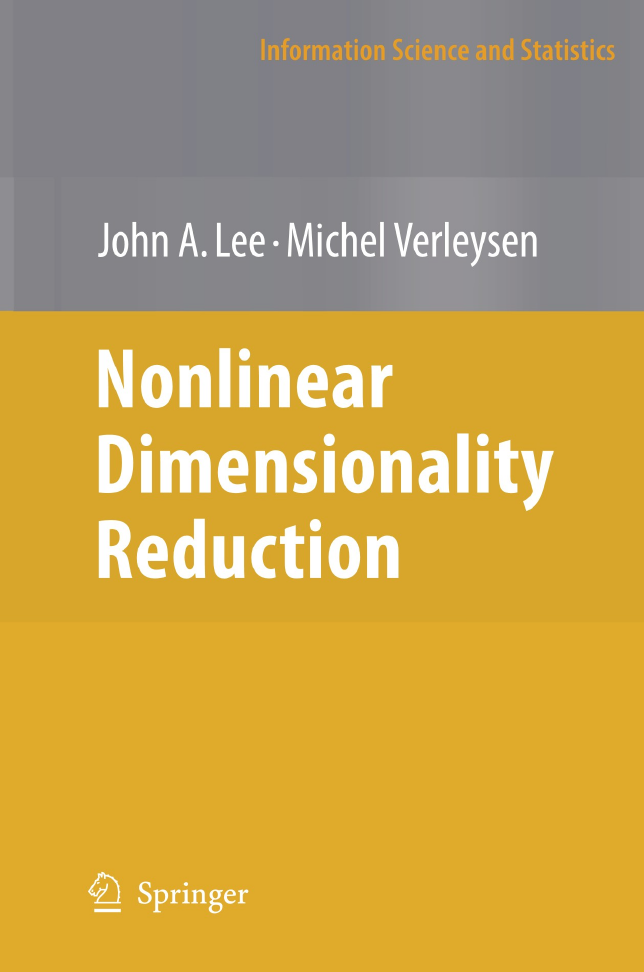
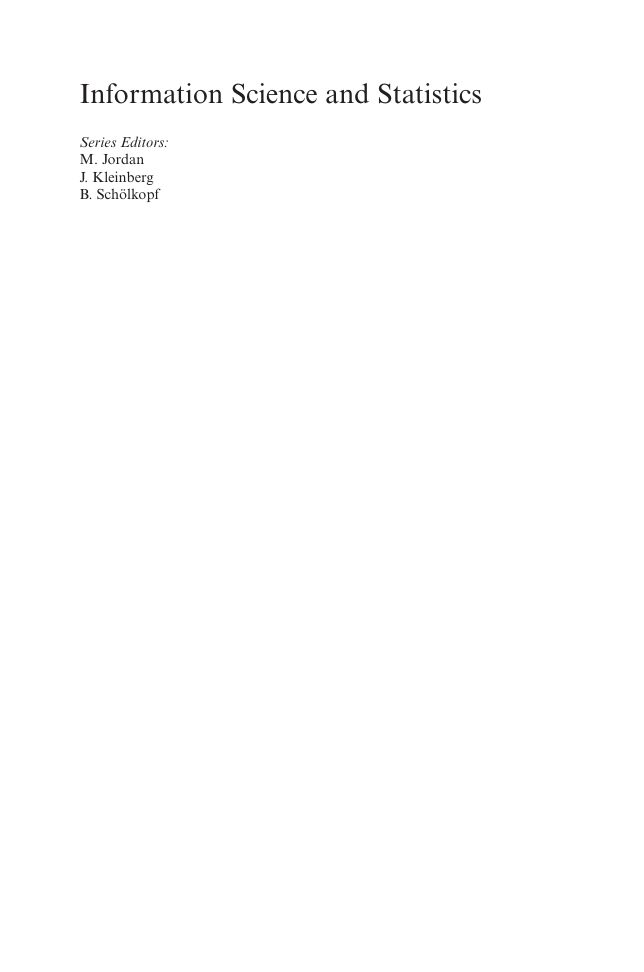
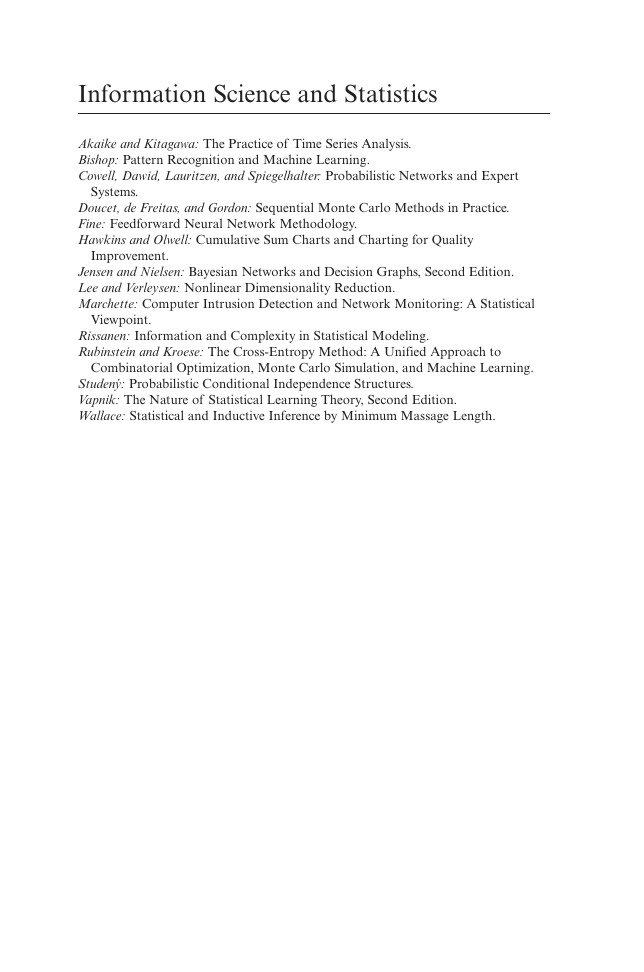
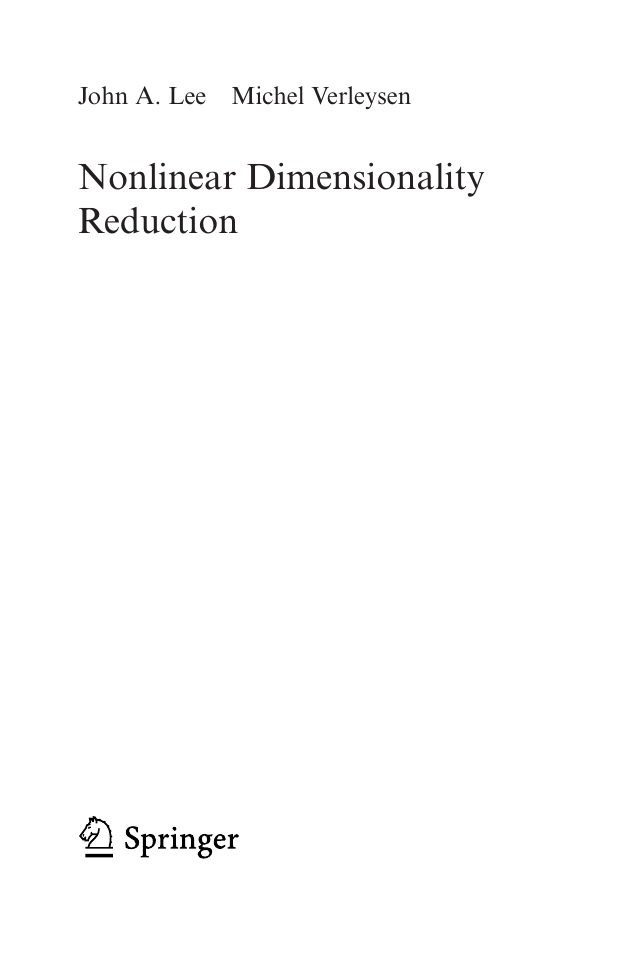
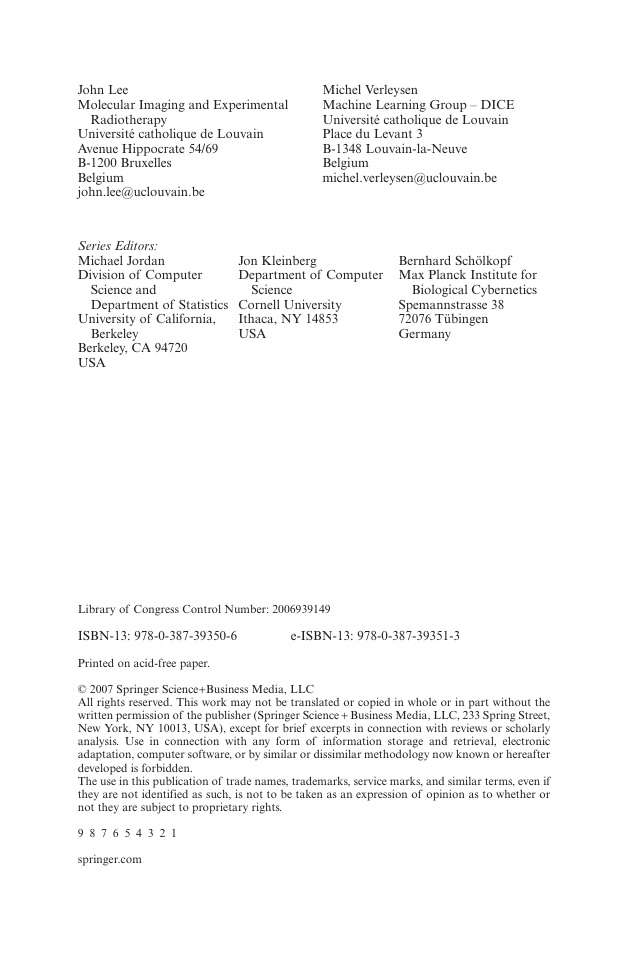

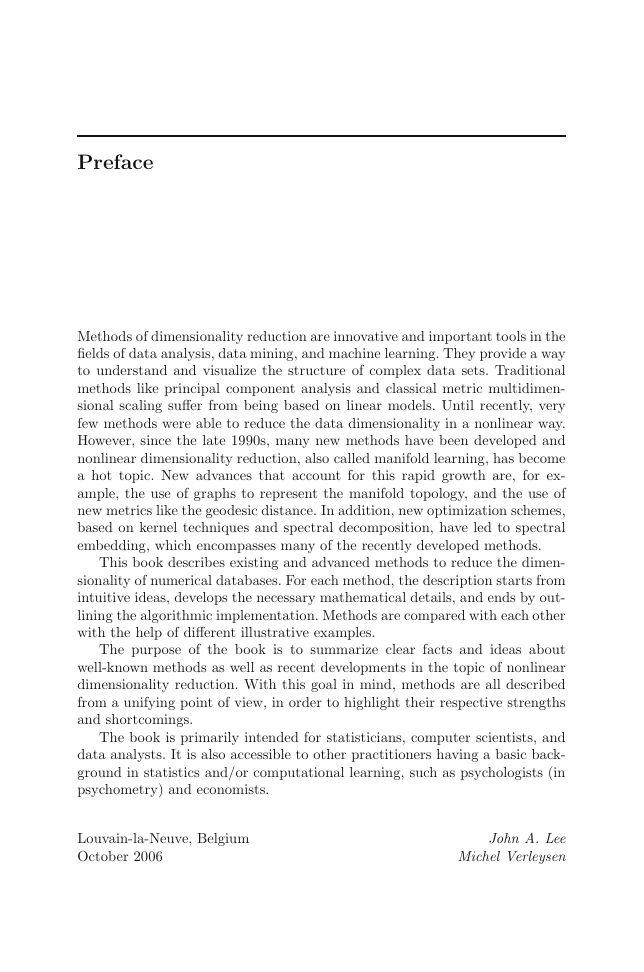









 2023年江西萍乡中考道德与法治真题及答案.doc
2023年江西萍乡中考道德与法治真题及答案.doc 2012年重庆南川中考生物真题及答案.doc
2012年重庆南川中考生物真题及答案.doc 2013年江西师范大学地理学综合及文艺理论基础考研真题.doc
2013年江西师范大学地理学综合及文艺理论基础考研真题.doc 2020年四川甘孜小升初语文真题及答案I卷.doc
2020年四川甘孜小升初语文真题及答案I卷.doc 2020年注册岩土工程师专业基础考试真题及答案.doc
2020年注册岩土工程师专业基础考试真题及答案.doc 2023-2024学年福建省厦门市九年级上学期数学月考试题及答案.doc
2023-2024学年福建省厦门市九年级上学期数学月考试题及答案.doc 2021-2022学年辽宁省沈阳市大东区九年级上学期语文期末试题及答案.doc
2021-2022学年辽宁省沈阳市大东区九年级上学期语文期末试题及答案.doc 2022-2023学年北京东城区初三第一学期物理期末试卷及答案.doc
2022-2023学年北京东城区初三第一学期物理期末试卷及答案.doc 2018上半年江西教师资格初中地理学科知识与教学能力真题及答案.doc
2018上半年江西教师资格初中地理学科知识与教学能力真题及答案.doc 2012年河北国家公务员申论考试真题及答案-省级.doc
2012年河北国家公务员申论考试真题及答案-省级.doc 2020-2021学年江苏省扬州市江都区邵樊片九年级上学期数学第一次质量检测试题及答案.doc
2020-2021学年江苏省扬州市江都区邵樊片九年级上学期数学第一次质量检测试题及答案.doc 2022下半年黑龙江教师资格证中学综合素质真题及答案.doc
2022下半年黑龙江教师资格证中学综合素质真题及答案.doc